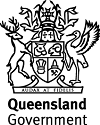Published Sunday, 11 January, 2009 at 01:51 PM

Treasurer
The Honourable Andrew Fraser
Cyclone Charlotte forms in Gulf – heads east
Treasurer and Acting Emergency Services Minister Andrew Fraser urged people in north-west Queensland to take the necessary precautions to ensure their safety after the Bureau of Meteorology officially advised Emergency Management Queensland of the formation of Tropical Cyclone Charlotte.
Coastal residents between Aurukun and the Northern Territory/Queensland border should be prepared for strong winds, flash flooding and dangerous storm tides as TC Charlotte crosses the coast tonight.
“At 10.30am this morning, the Bureau confirmed the formation of Cyclone Charlotte, which is currently sitting 60km north-east of MorningtonIsland and heading east,” Mr Fraser said.
“While its only a Category 1, we can still expect heavy rainfall and winds of up to 125km/h.
“This is the first cyclone of the year, and no-one should be complacent.
“The cyclone is likely to cross land south of Kowanyama, and while this is a remote, sparsely-populated area of Queensland, residents affected should take measures to protect their property as much as possible and be prepared to follow instructions regarding evacuation if advised to do so by the authorities.
“Residents on the east coast of Northern Queensland should also be prepared, with rain likely to continue to affect communities between Cooktown and Mackay in the early and mid part of this coming week.
“All disaster management groups in the north have been making the necessary preparations. EMQ has also organised regional resources and has local State Emergency Service (SES) personnel on standby.
“Should flooding occur, I urge everyone to cease unnecessary travel and for kids to stay out of floodwaters.
“By being prepared for cyclones, residents can greatly reduce the risks to family and property.”
Preparation for residents include:
- Check that your home is in a sound condition, especially the roof and eaves.
- Trim any tree branches hanging over your roof.
- Know your community disaster plan, check with your local council.
- Prepare an emergency kit containing:
* A portable radio, torch and spare batteries.
* Stocks of fresh water and canned food.
* Matches, fuel lamp, portable stove, cooking gear, utensils, and can opener.
* Waterproof bags for clothing and valuables.
* A first aid kit, manual and masking tape for windows.
- Keep a list of emergency phone numbers handy, including numbers for your local Police, Fire, Ambulance, State Emergency Service, Local Council, Gas and Electricity Company and relatives.
- Find out how and where to turn off power, gas and water supplies.
- Check that you have adequate household and contents insurance and which hazards are not covered by the policy.
- Store your important documents (eg wills, passports, photos, birth certificates) in a fire/water-proof container or safe deposit box.
Emergency Management Queensland Executive Director Frank Pagano said residents in the affected area should make necessary preparations for the worsening weather, and discuss evacuation plans.
“If you haven't already put an emergency kit together, now is the time. Your kit should include emergency phone numbers, portable radio, torch, spare batteries, first aid kit, medications, food for three days, fuel, strong plastic bags for clothing and valuables, and also materials for temporary repairs.
“Residents should also trim any tree branches hanging over their roof, clear any loose items that may blow about, check boats are securely moored or protected on land, and shelter and secure animals,” he said.
During a cyclone people should shelter in a solid section of a building, such as a hallway or built-in wardrobe, or under a mattress, doona, table or bench.
If boating, get ashore as soon as possible or seek protection beneath a high structure such as a bridge or jetty.
After the cyclone passes, listen to your local radio station for advice, check for gas leaks, structural damage and make temporary repairs, beware of fallen power lines, damaged buildings and trees and flooded watercourses.
"People are encouraged to stay away from tidal areas during times of heightened storm activity. Importantly, the number to contact the SES from anywhere in Queensland is 132 500," Mr Pagano said.
Residents should listen to a local radio station for the latest weather reports and visit website www.disaster.qld.gov.au <http://www.disaster.qld.gov.au/> for cyclone safety measures.
Media Contact: Treasurer's Office - 0437 837 976
Emergency Services Media Unit: 3247 8320

